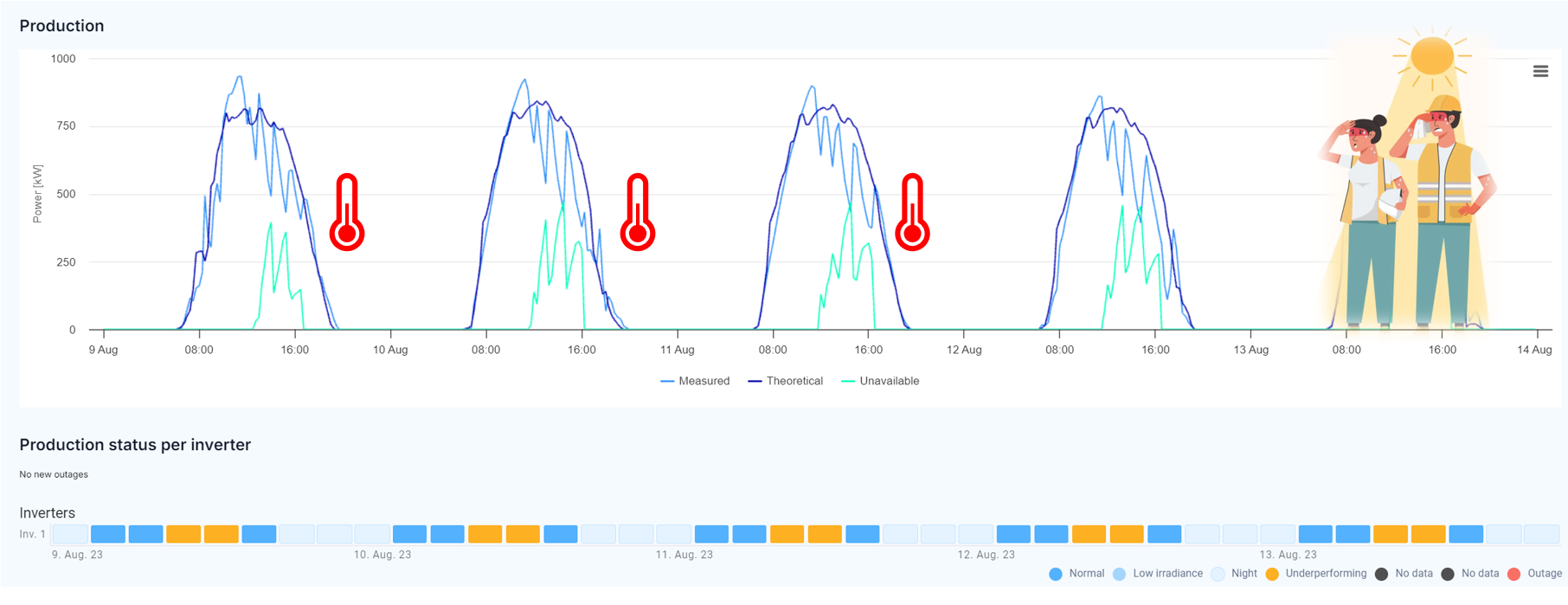Heat-Related Performance Losses
As solar power continues to play a central role in Europe’s energy transition, ensuring the stable operation of photovoltaic systems is more critical than ever. While solar irradiation is essential for energy production, elevated temperatures and heat stress can negatively impact system performance and reliability — all year round.
The Hidden Impact of Heat on PV Systems
Photovoltaic modules become less efficient as their temperature rises. But even more importantly, inverters are highly sensitive to heat. Poor ventilation, clogged filters, or confined installation spaces can lead to overheating, which in turn may cause:
- Reduced output or derating
- Unexpected shutdowns
- Long-term equipment degradation
These heat-related risks can result in significant energy and revenue losses, particularly if they go undetected for too long.

How to Ensure Stable Performance Under Thermal Stress
🔧 Maintaining optimal performance under all environmental conditions requires a combination of preventive maintenance and intelligent monitoring:
- Respect the mounting instructions from the inverter user manual strictly
- Clean inverter fans and air filters regularly
- Ensure technical areas are well ventilated and free from obstruction
- Continuously monitor system behavior to detect early warning signs
Detect and Respond with Novasense
Novasense offers precise, real-time monitoring across all key levels of your solar installation — from the power plant level down to each inverter and MPPT. This detailed insight allows operators and asset managers to act before heat-related issues escalate. With Novasense, you gain:
- Real-time detection of inverter and MPPT anomalies
- Insight into temperature-related performance degradation
- Data-driven tools for efficient O&M and asset optimization
Protect Your Output — and Your Investment
Whether you're operating in mild or hot climates, thermal stress is a year-round risk. With regular maintenance and Novasense’s advanced monitoring capabilities, you can prevent losses, reduce downtime, and ensure your solar plant performs at its full potential.
